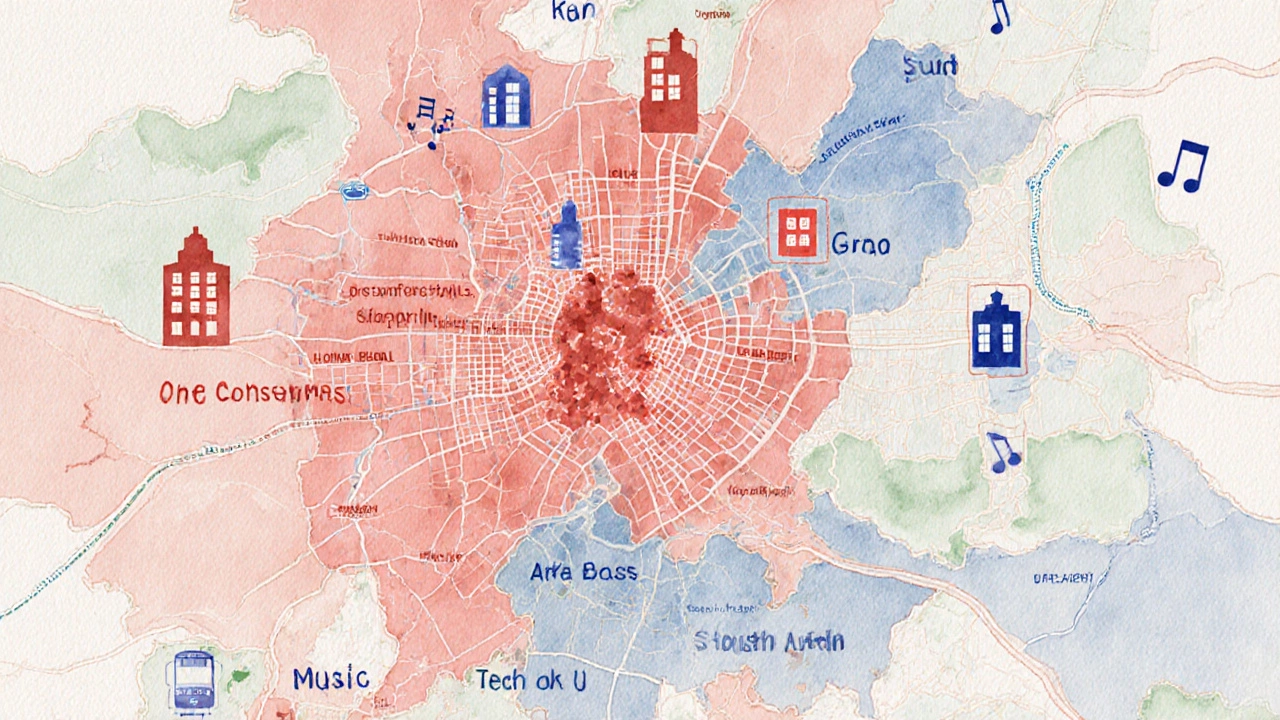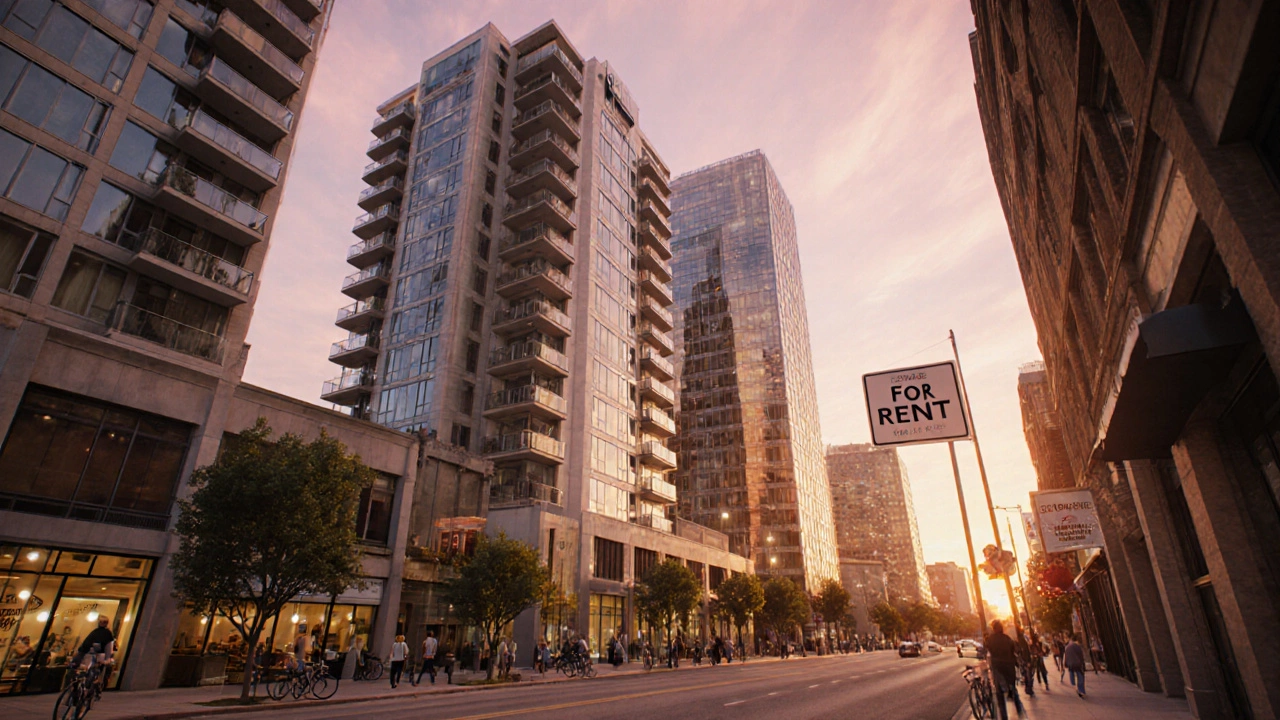Austin Rent Budget Calculator
Calculate Your Maximum Affordable Rent
According to the 30% rule, your rent should not exceed 30% of your gross monthly income. This tool helps you determine what's affordable in Austin based on neighborhood pricing.
Quick Takeaways
- Average rent for a one‑bedroom in Austin is Austin rent $1,580 per month in 2025.
- Downtown and South Congress command the highest rates, while East Austin and Zilker offer more affordable options.
- Rent‑to‑income ratio should stay below 30% to keep your budget healthy.
- Use Zillow, Apartment List, and the Austin Housing Authority for reliable listings.
- Expect a 3‑5% increase year‑over‑year as tech jobs continue to grow.
What "rent in Austin" Actually Means
When you hear "rent in Austin," you’re really talking about the Austin rent market the collection of rental prices, availability, and trends specific to Austin, Texas. The city’s rapid growth over the past decade has turned a once‑affordable college town into a national hot spot for tech talent, live music, and outdoor lifestyle. Those forces shape how much you’ll pay for a studio, a two‑bedroom, or a single‑family home.
Current Snapshot (Fall2025)
The latest data from the U.S. Census Bureau the federal agency that collects demographic and housing statistics and Zillow online real‑estate marketplace offering rental price indices paint a clear picture:
- Overall average rent for all unit types: $1,720/month.
- One‑bedroom average: $1,580/month.
- Two‑bedroom average: $2,120/month.
- Studio average: $1,250/month.
- Vacancy rate: 5.4% (down from 7.1% in 2022).
These numbers are higher than the national average by roughly 12%, but still lower than San Francisco or NewYork City.
How Rent Varies by Neighborhood
Austin isn’t a monolith-each district has its own vibe and price point. Below is a quick comparison of the most popular neighborhoods for renters.
| Neighborhood | Studio | 1‑Bedroom | 2‑Bedroom |
|---|---|---|---|
| Downtown Austin | $1,400 | $1,900 | $2,600 |
| South Congress | $1,350 | $1,850 | $2,500 |
| East Austin | $1,200 | $1,550 | $2,200 |
| Zilker | $1,250 | $1,620 | $2,300 |
| Capitol Hill | $1,300 | $1,720 | $2,380 |
| University of Texas at Austin area | $1,180 | $1,520 | $2,150 |
Notice the $300‑$500 premium for units within a half‑mile of the downtown core. If you’re on a tighter budget, East Austin and the UT area still give you easy access to public transit and a lively scene without the downtown price tag.

Key Factors That Drive Austin Rent
- Tech job growth: Companies like Apple, Google, and Tesla have expanded campuses here, pushing up demand for housing.
- University enrollment: Over 50,000 undergraduates create a steady stream of short‑term renters.
- Entertainment & culture: Live‑music venues, food trucks, and festivals attract millennials who are willing to pay a premium for a walkable lifestyle.
- Limited new construction: While the city added 5,800 new units in 2024, supply still lags behind demand, keeping vacancy low.
- Transportation infrastructure: Proximity to MetroRail and Capital Metro bus routes adds value to neighborhoods like East Austin.
How to Budget Your Rent Wisely
The classic rule of thumb is to spend no more than 30% of your gross monthly income on rent. Here’s a quick calculator you can use:
- Take your monthly pre‑tax salary (e.g., $5,000).
- Multiply by 0.30 = $1,500.
- If utilities aren’t included, add an estimated $150‑$200.
- Result: aim for a unit priced around $1,300‑$1,350 if you need to cover utilities.
If you earn less than $4,000/month, you’ll likely need to look at East Austin, Zilker, or shared‑room situations to stay within the 30% range.
Where to Find Reliable Listings
Not all rental sites are created equal. Below are the most trustworthy sources for Austin apartments:
- Apartment List online platform specializing in data‑driven apartment searches - great for price trends and neighborhood filters.
- Zillow Rentals comprehensive listings with rent‑estimate tools - useful for historic rent data.
- RentCafe offers real‑time availability and resident reviews - good for newer high‑rise complexes.
- Austin Housing Authority city‑run agency providing affordable‑housing options and voucher listings - essential if you qualify for income‑based programs.
- Local Facebook groups and Reddit’s r/AustinHousing - community‑driven leads on sublets and roommate matches.
When you find a place, always request a virtual tour, ask for recent utility bills, and verify the landlord’s identity through a lease‑signing platform.

Lease Essentials You Can’t Ignore
Signing a lease in Austin is pretty straightforward, but a few clauses trip up newcomers:
- Pet policy: Many complexes allow cats but charge $250‑$500 pet deposit for dogs.
- Utility responsibility: Some downtown buildings bundle water and trash, while others pass everything to the tenant.
- Security deposit limits: Texas law caps deposits at one month’s rent, but landlords often ask for the first month’s rent up front.
- Early‑termination fee: Expect a $500‑$1,000 charge if you break the lease before the end of the term.
- Rent increase notice: State law requires at least 30 days’ notice for any increase.
Read each line, ask for clarification, and never sign a lease without a written copy.
Looking Ahead: 2025‑2026 Forecast
Analysts from Apartment List predict a modest 3‑5% rise in average rent over the next 12 months. The drivers?
- Continued hiring by Tesla’s Gigafactory and Apple’s Austin campus.
- Upcoming light‑rail extensions making East Austin even more accessible.
- State‑level incentives for affordable‑housing developers, which could add ~2,500 low‑income units by 2027.
If you’re planning to move in the next year, lock in a lease now or negotiate a rent‑freeze clause to protect against sudden hikes.
Tips for Newcomers to Austin
- Get a Texas driver’s license within 30 days- many landlords check it for background screening.
- Set up an electric account with Reliant Energy early to avoid service gaps.
- Download the Capital Metro app for real‑time bus schedules; a monthly pass costs $41.
- Join the local Austin Housing Authority newsletter for affordable‑housing alerts.
- Explore free weekend events like Zilker Kite Festival - you’ll get a feel for the vibe before committing to a lease.
Frequently Asked Questions
What is the average rent for a one‑bedroom in Austin?
In October2025 the median rent for a one‑bedroom apartment is about $1,580 per month, according to Zillow and the U.S. Census Bureau.
Which neighborhoods are cheapest for students?
East Austin and the University of Texas area typically offer studios and one‑bedrooms under $1,550, making them the most budget‑friendly options for students.
Do I need a co‑signer if I’m an international student?
Most landlords require a U.S. credit history. A co‑signer or a security‑deposit boost (often double the first month’s rent) can satisfy that requirement.
How far in advance should I start looking for an apartment?
Start your search at least 60days before your intended move‑in date, especially if you’re targeting high‑demand areas like Downtown or South Congress.
Are utilities typically included in rent?
It varies. Many downtown high‑rises bundle water, trash, and sometimes internet, while most suburban complexes bill electricity and gas separately.
